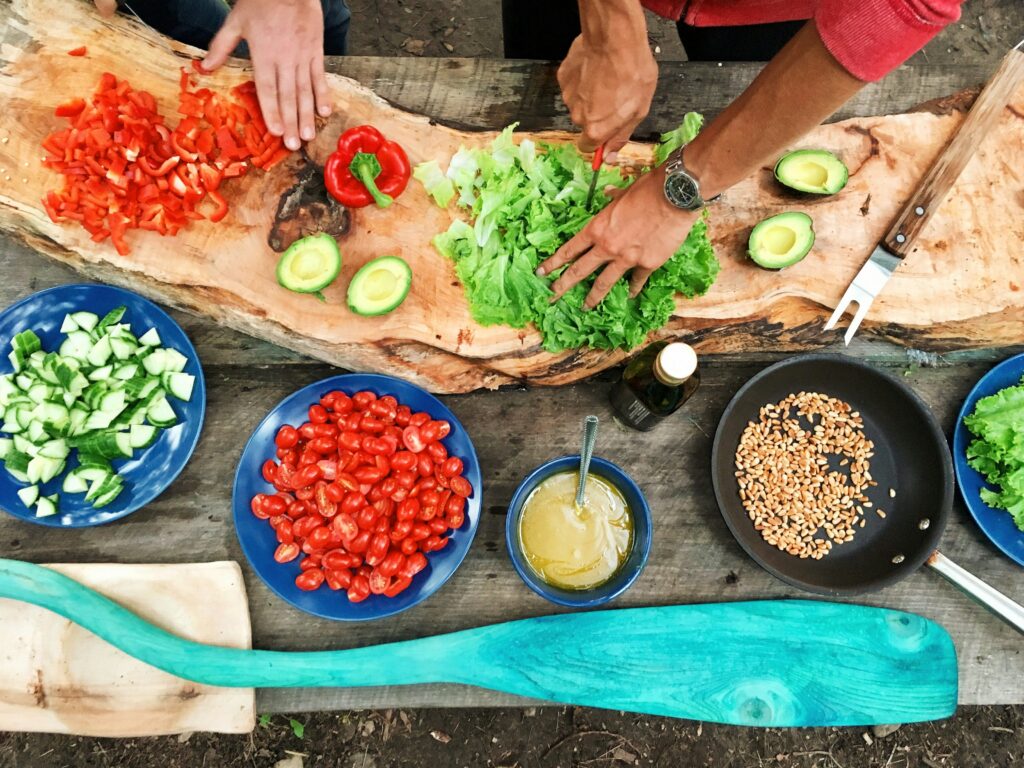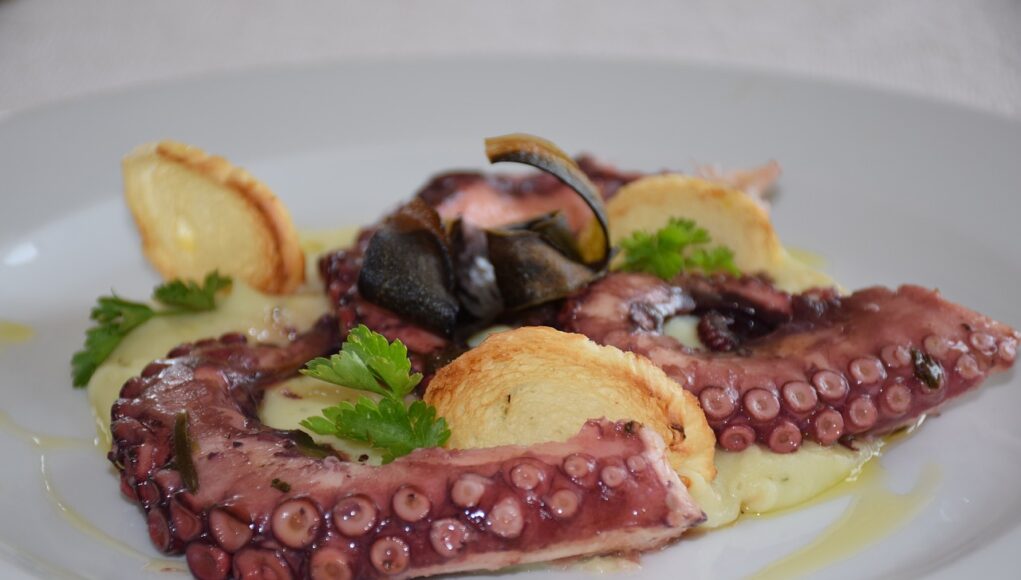For those with a passion for culinary delights, embarking on a gastronomic adventure can be one of the most rewarding travel experiences. From vibrant food festivals to hidden local gems, the world is brimming with flavors waiting to be explored. This guide will take you on a culinary journey across continents, highlighting must-visit dining destinations, local delicacies, and gourmet experiences that every food enthusiast should savor. Whether you’re a street food lover or a fine dining aficionado, there’s something for everyone in the realm of epicurean expeditions.

Table of Contents
- 1. Food Festivals: A Celebration of Culinary Culture
- 2. Local Delicacies: Must-Try Dishes Around the World
- 3. Gourmet Experiences: Fine Dining at Its Best
- 4. Culinary Classes: Learn from the Locals
- 5. Street Food: Affordable and Authentic
- 6. Must-Visit Dining Destinations
- 7. Food Tours: Guided Culinary Adventures
- Conclusion
- FAQs
1. Food Festivals: A Celebration of Culinary Culture
Food festivals are a fantastic way to immerse oneself in the local culinary scene. They offer a unique opportunity to taste a variety of dishes, meet local chefs, and learn about the culture behind the cuisine. One of the most renowned food festivals is the San Sebastián Gastronomika held in Spain every October. This festival showcases the best of Basque cuisine, featuring cooking demonstrations, tastings, and workshops. Tickets typically range from €50 to €150 depending on the events you choose to attend.
Another must-visit is the Melbourne Food and Wine Festival in Australia, which takes place in March. With over 200 events, including masterclasses and exclusive dinners, this festival celebrates the best of Australian produce. Expect to spend around AUD 100 to AUD 300 for various events, depending on the experience.
2. Local Delicacies: Must-Try Dishes Around the World
Every destination has its own unique flavors, and trying local delicacies is essential for any food lover. In Thailand, for instance, savoring Pad Thai from a street vendor can cost as little as 40 THB (about $1.20). The combination of stir-fried rice noodles, shrimp, tofu, and peanuts creates a symphony of flavors that is hard to resist.
“Food is a celebration of life, a way to connect with people and cultures.”
In Italy, indulging in Risotto alla Milanese is a must. This creamy saffron-infused dish is a staple in Milan and can be found in many trattorias for around €15. Pair it with a glass of local wine for a complete experience.

3. Gourmet Experiences: Fine Dining at Its Best
For those who appreciate the art of fine dining, the world is home to numerous Michelin-starred restaurants that promise an unforgettable culinary experience. Osteria Francescana in Modena, Italy, is a three-Michelin-star restaurant known for its innovative approach to traditional Italian cuisine. A meal here can cost around €300 per person, but the experience is worth every penny.
“A good chef is like a storyteller; every dish tells a tale.”
In Tokyo, Jiro Sushi is another culinary gem, famous for its exquisite sushi. Reservations are essential, and the tasting menu starts at ¥30,000 (approximately $280). Dining at such establishments not only satisfies the palate but also provides insight into the chefs’ dedication and craftsmanship.
4. Culinary Classes: Learn from the Locals
Participating in a cooking class is a fantastic way to deepen your understanding of a region’s culinary traditions. In Mexico, for example, a cooking class in Oaxaca can cost around $70. Participants learn to make traditional dishes like mole and tamales, often using local ingredients sourced from nearby markets.
In Thailand, cooking classes often include a market tour where you can learn about local herbs and spices before preparing dishes like green curry. Classes typically range from $50 to $100, depending on the duration and inclusions.
5. Street Food: Affordable and Authentic
Street food is often the heart and soul of a city’s culinary scene. In cities like Bangkok, street vendors offer delicious meals at incredibly low prices. A bowl of Tom Yum Goong can be enjoyed for just 60 THB (approximately $1.80), while a serving of Som Tum (papaya salad) might cost around 40 THB.
In Mexico City, don’t miss out on tacos al pastor, which can be found at numerous street stalls for about 15 MXN (around $0.75) each. The experience of eating where locals eat adds an authentic touch to any culinary adventure.
6. Must-Visit Dining Destinations
Some cities are renowned for their food scenes, making them essential stops for any food lover. Tokyo is a culinary paradise, offering everything from sushi to ramen. A visit to the Tsukiji Outer Market is a must, where fresh seafood and local delicacies abound.
Barcelona is another city that should be on every foodie’s radar. The vibrant tapas bars and bustling markets like La Boqueria offer a taste of Catalonia’s culinary diversity. Expect to spend around €20-€30 for a delightful tapas experience.
7. Food Tours: Guided Culinary Adventures
Food tours provide a curated experience, allowing travelers to sample a variety of dishes while learning about the culture and history behind them. In New Orleans, a food tour can cost around $75 and typically includes stops at iconic eateries, tasting local specialties like gumbo and beignets.
In Istanbul, a food tour can lead you through bustling bazaars and hidden eateries, where you can try dishes like Kebabs and Baklava. Prices for these tours usually range from $50 to $100, depending on the duration and number of tastings included.
Conclusion
Embarking on an epicurean expedition opens a world of flavors, cultures, and experiences. From food festivals celebrating local cuisine to gourmet dining experiences that tantalize the senses, there is no shortage of culinary adventures waiting to be discovered. Whether you’re indulging in street food or dining at a Michelin-starred restaurant, each bite tells a story. So pack your bags, bring your appetite, and get ready to explore the world through its diverse and delicious culinary offerings.
Citations and References:
- San Sebastián Gastronomika: www.sansebastiangastronomika.com
- Melbourne Food and Wine Festival: www.melbournefoodandwine.com.au
- Osteria Francescana: www.osteriafrancescana.it
- Jiro Sushi: www.sushi-jiro.jp/eng/
FAQs
What’s the best time of year to visit food festivals?
The best time to visit food festivals varies by location. For instance, the San Sebastián Gastronomika in Spain occurs in October, while the Melbourne Food and Wine Festival takes place in March. Research specific festivals to find the best time for your culinary adventure.
How much should I budget for a culinary trip?
Budgeting for a culinary trip can vary widely based on destination and dining preferences. On average, expect to spend around $100 to $300 per day, including meals, transportation, and activities. Fine dining experiences can significantly increase this budget, so plan accordingly.
What should I pack for a culinary journey?
Pack comfortable clothing and shoes for walking, as many culinary experiences involve exploring markets and neighborhoods. A reusable water bottle, a small notebook for jotting down recipes or experiences, and a camera for capturing delicious moments are also recommended.
Are there any safety concerns when trying street food?
While street food can be safe and delicious, it’s important to choose vendors with high turnover and good hygiene practices. Look for busy stalls where locals eat, as this often indicates quality and freshness. Avoid raw foods and opt for freshly cooked items.
How can I navigate transportation in foreign cities?
Research local transportation options before your trip. Many cities offer public transport systems that are affordable and efficient. Apps like Google Maps can help navigate public transport routes. Alternatively, consider walking or using rideshare services for convenience.
What local customs should I be aware of when dining abroad?
Dining customs vary greatly by culture. In Japan, for example, it’s customary to say “Itadakimasu” before meals, while in Italy, tipping is less common. Familiarize yourself with local dining etiquette to enhance your experience and show respect for the culture.
Are there any insider tips for getting the most out of food tours?
To maximize your food tour experience, ask your guide for recommendations on local favorites and hidden gems. Be open to trying new dishes and flavors, and don’t hesitate to engage with locals for additional insights into the culinary scene.
How can I find the best local restaurants?
Utilize apps like Yelp or TripAdvisor to read reviews and find highly-rated local restaurants. Additionally, asking locals for recommendations can lead to discovering hidden gems that may not be listed online.


















